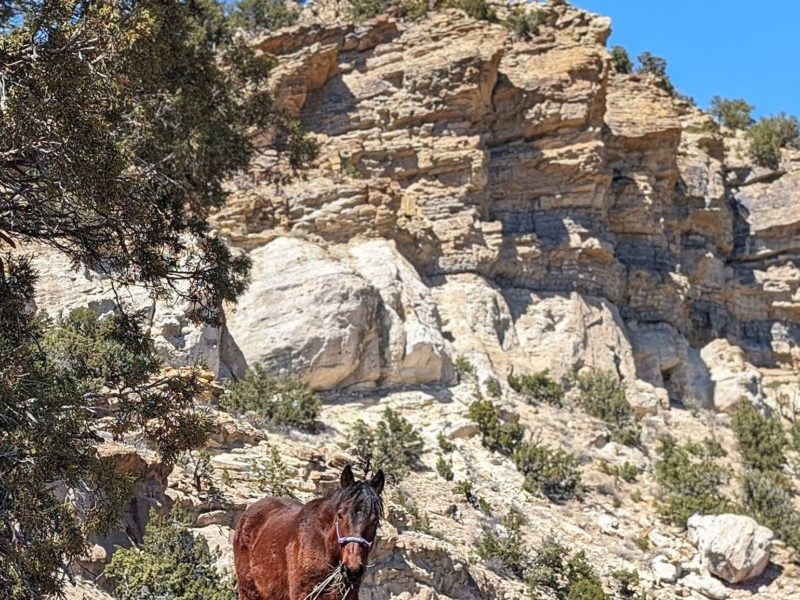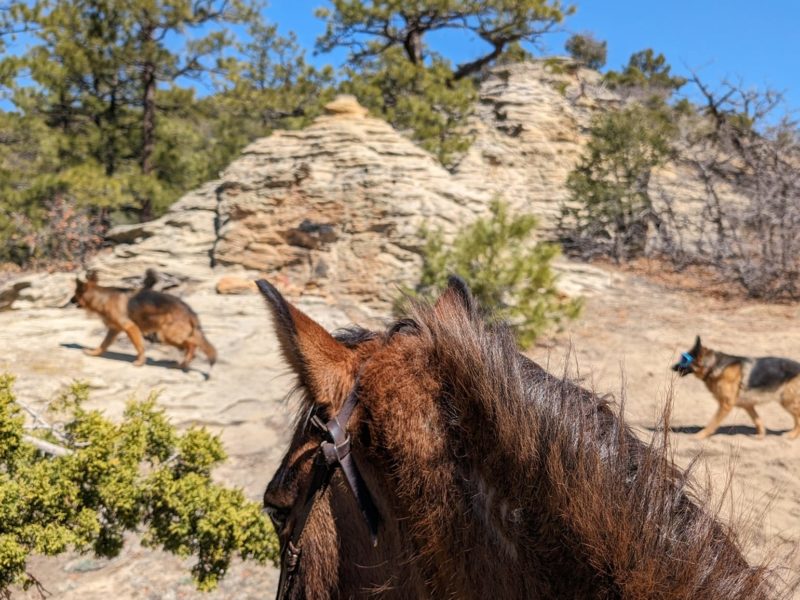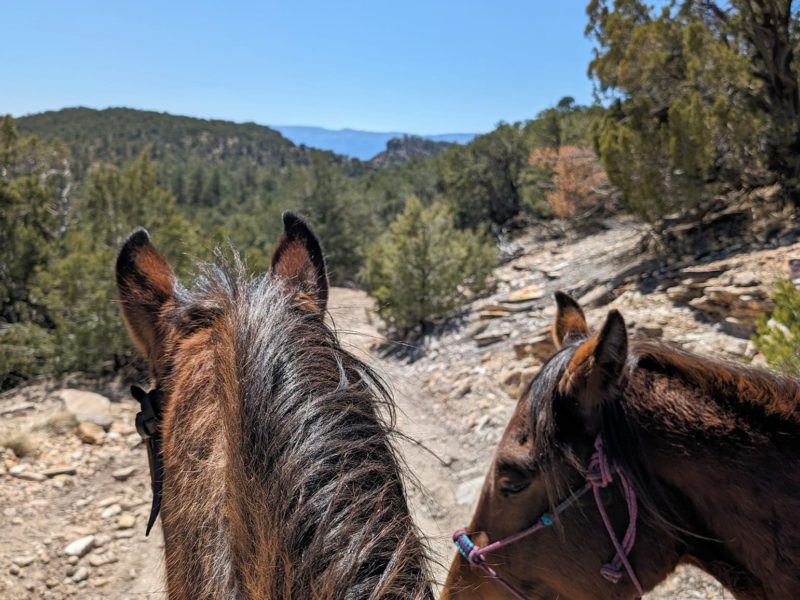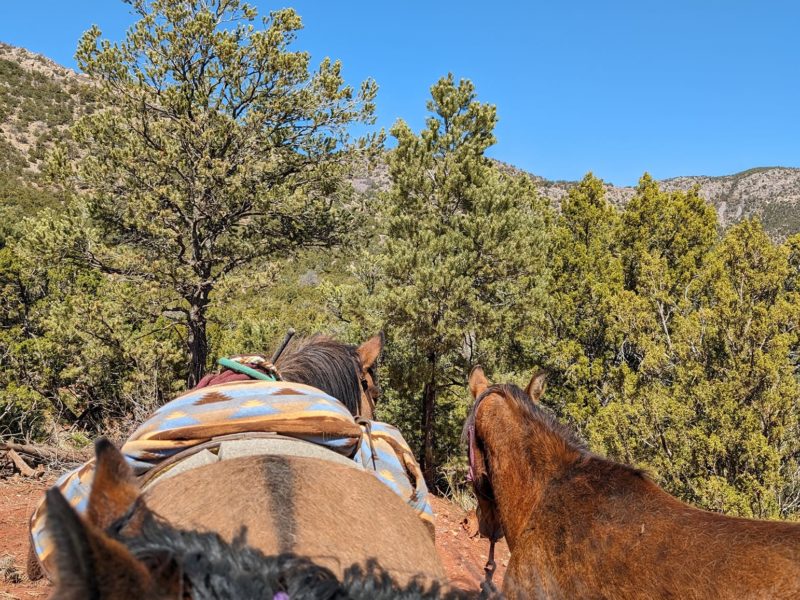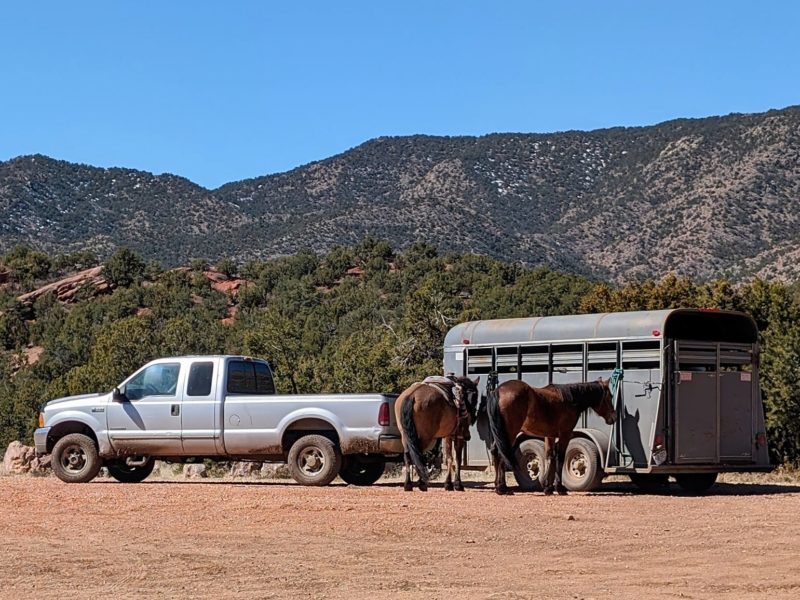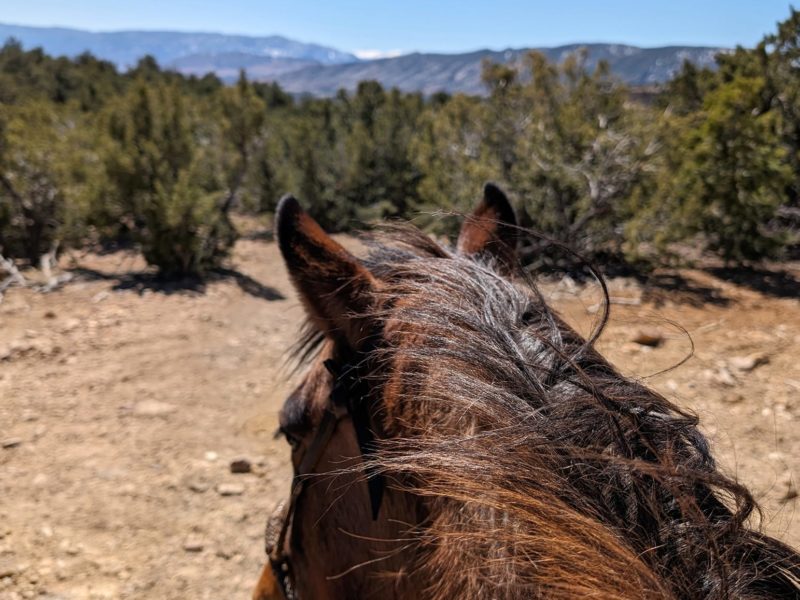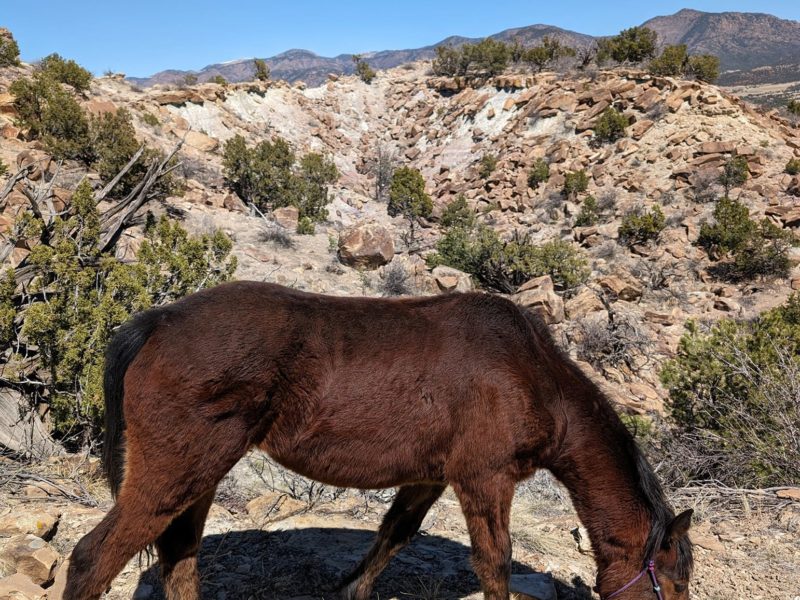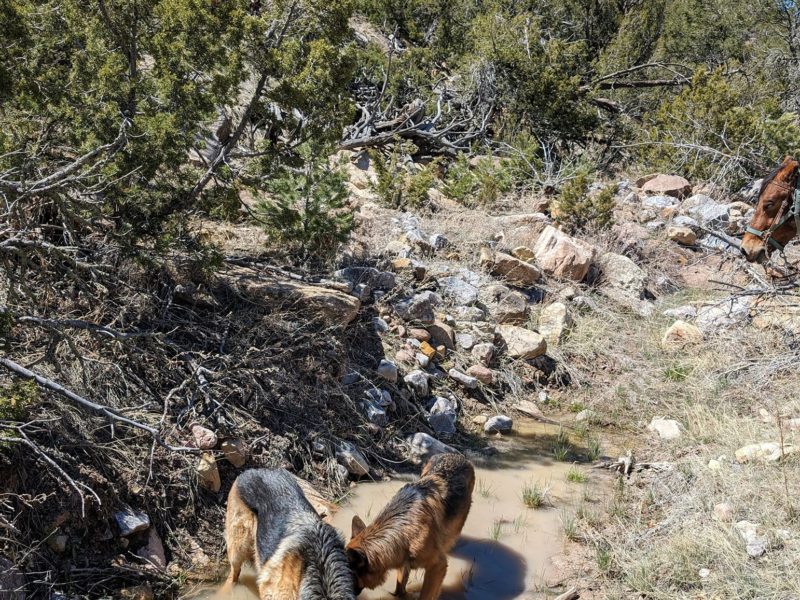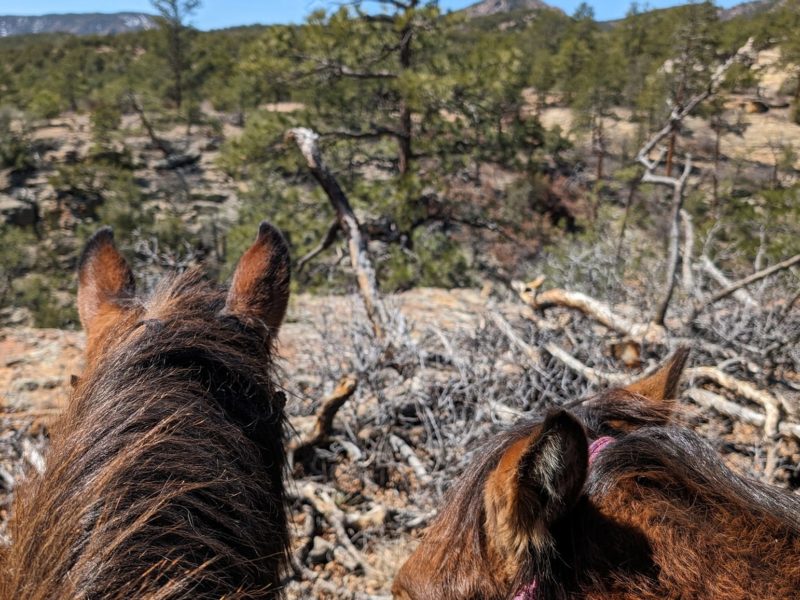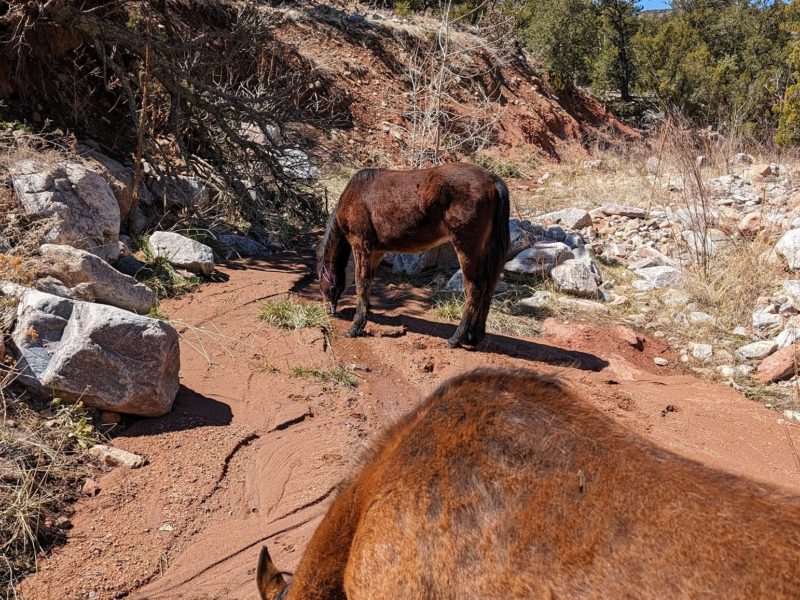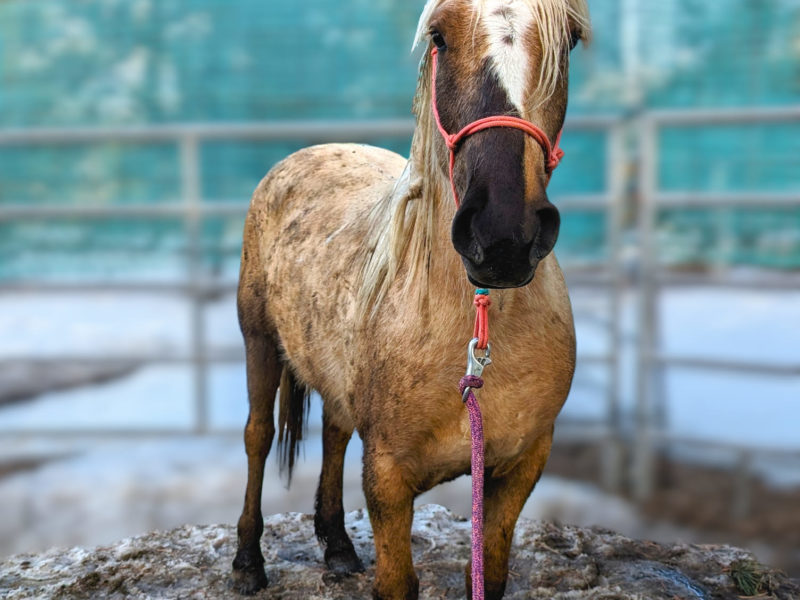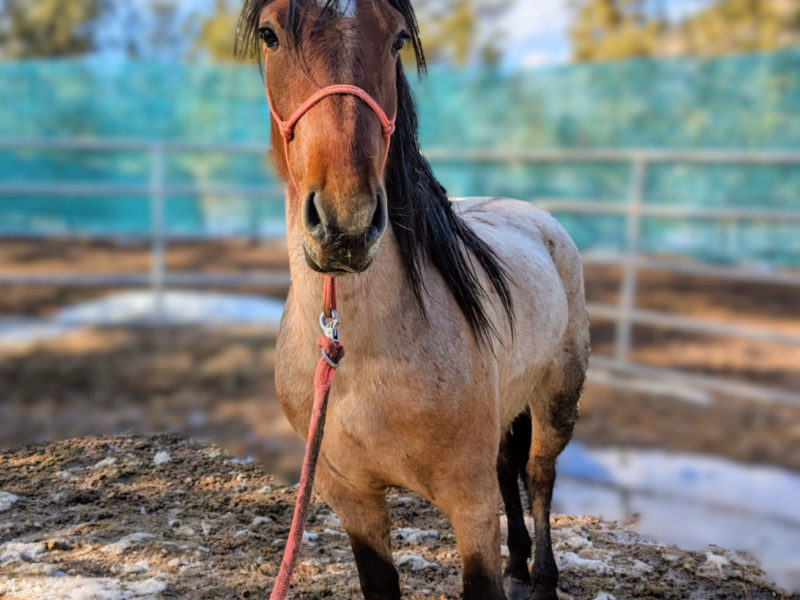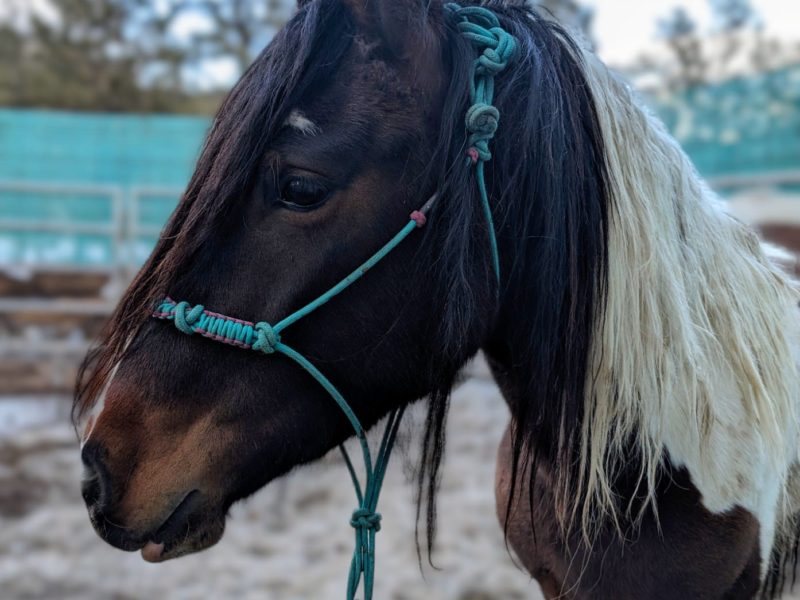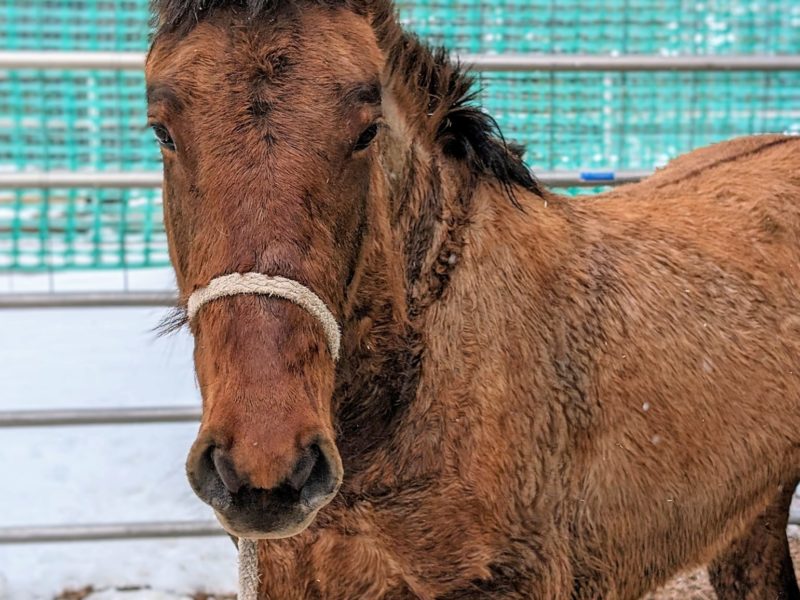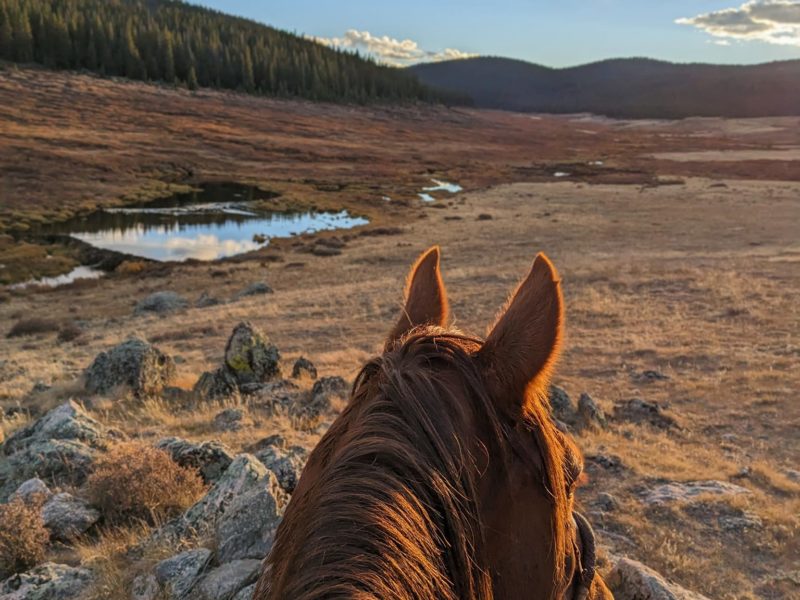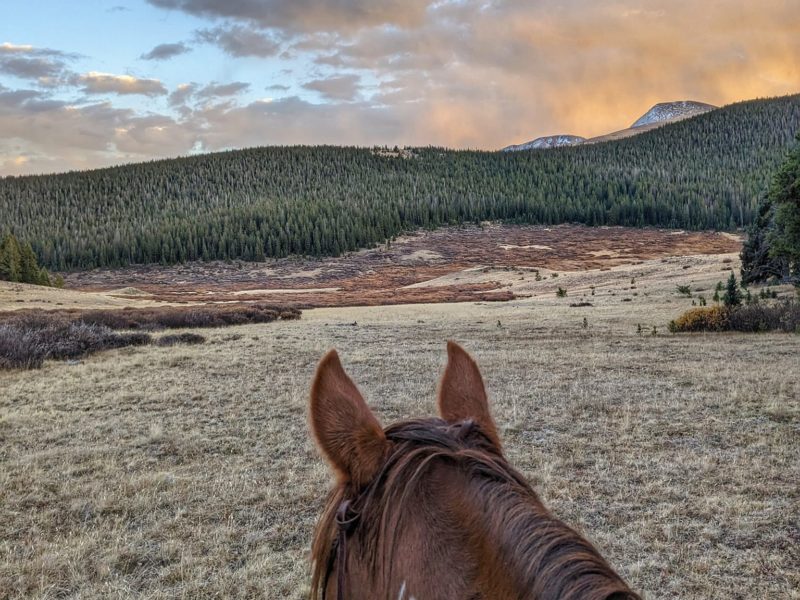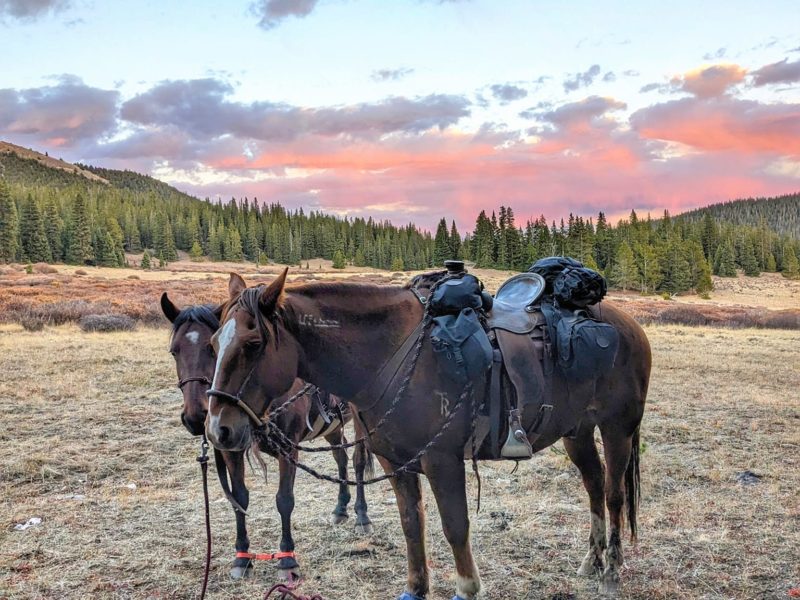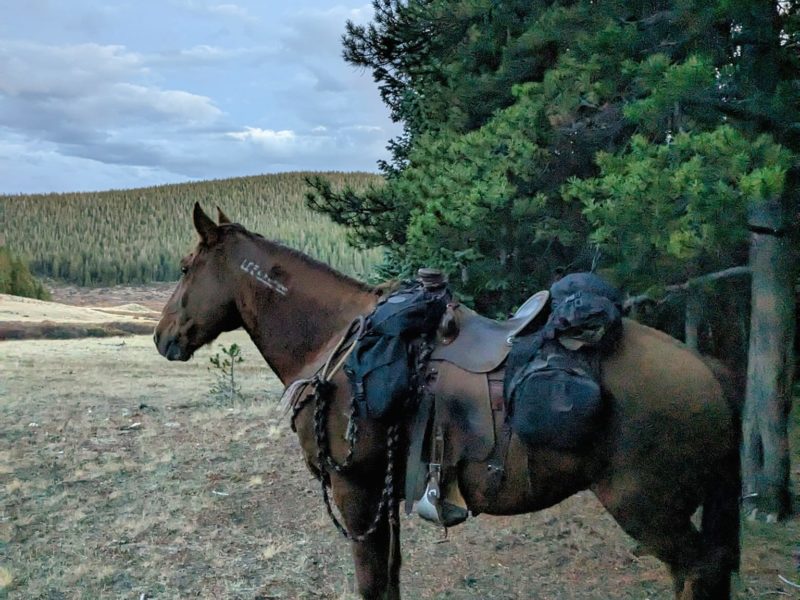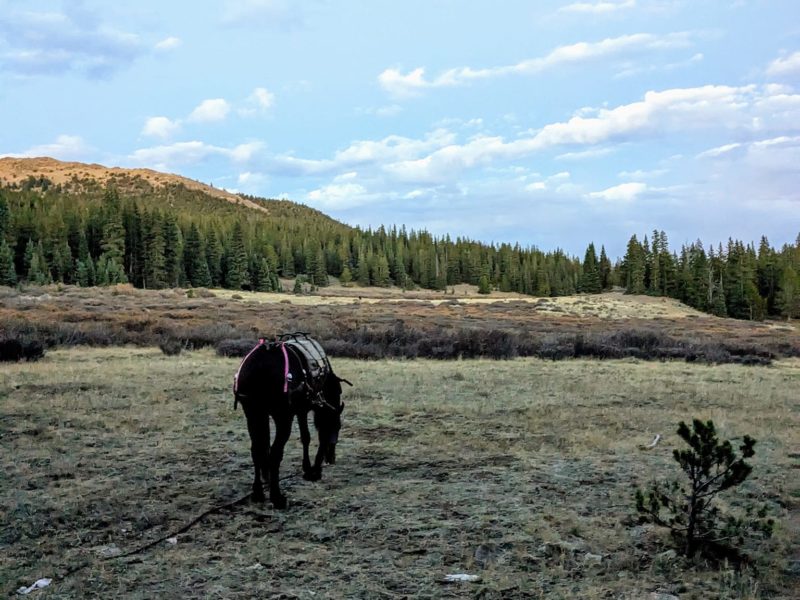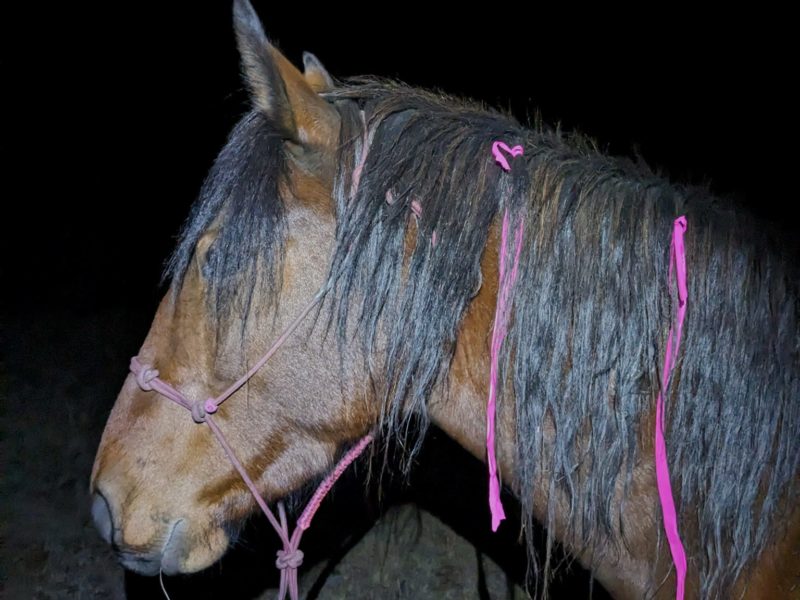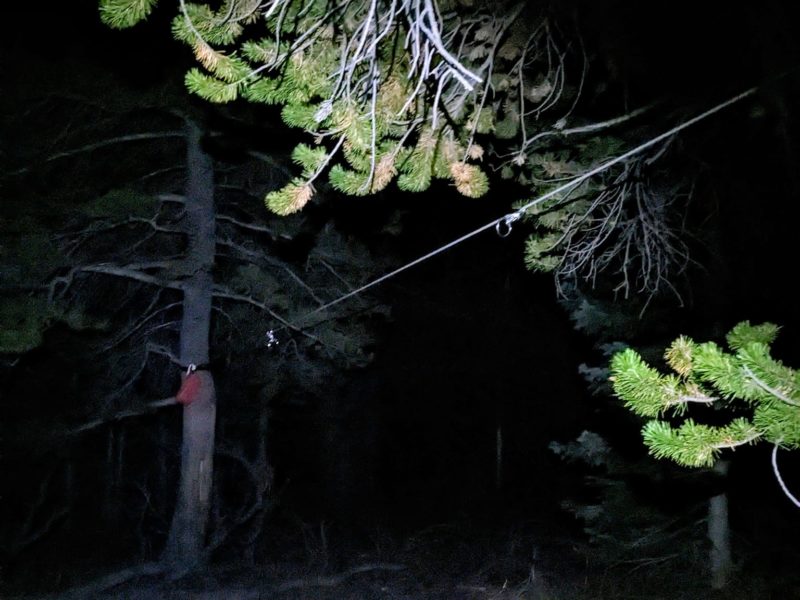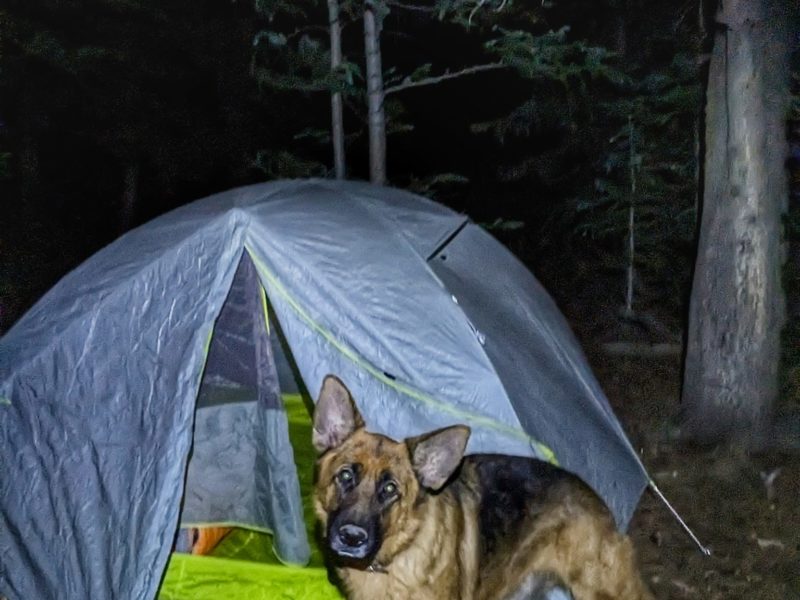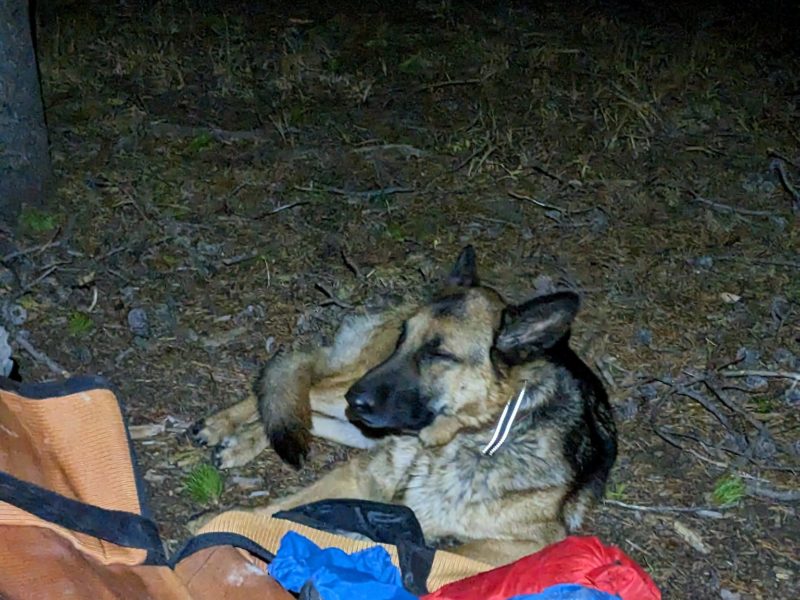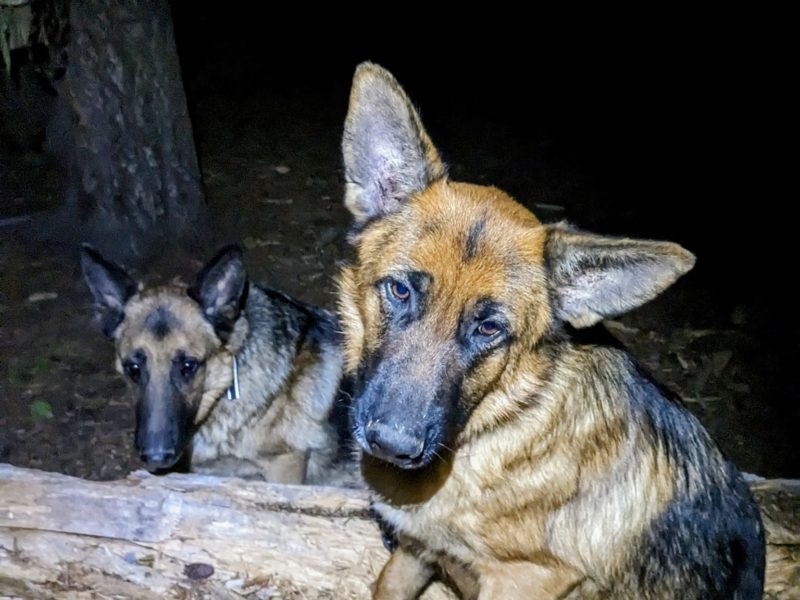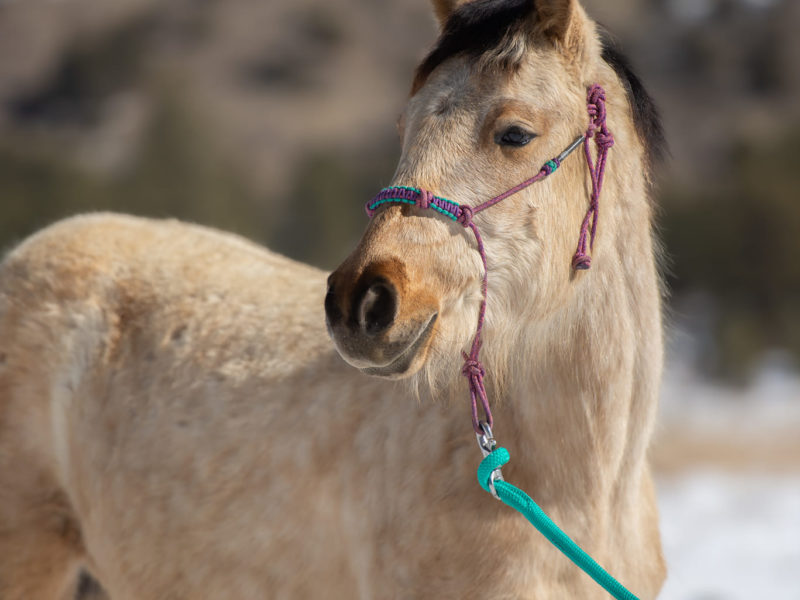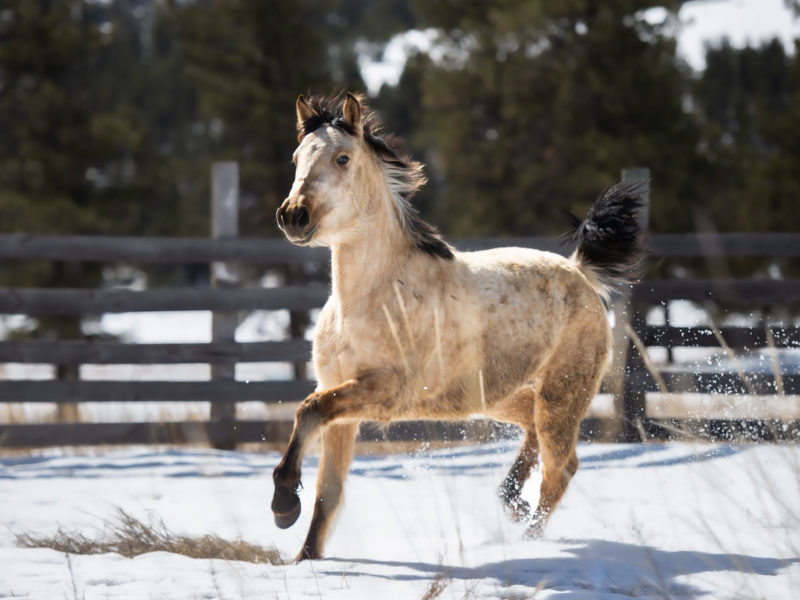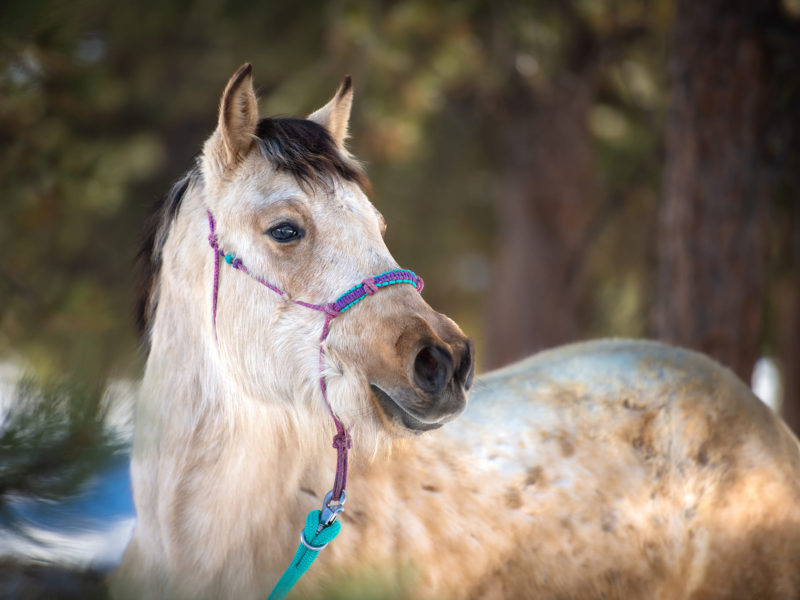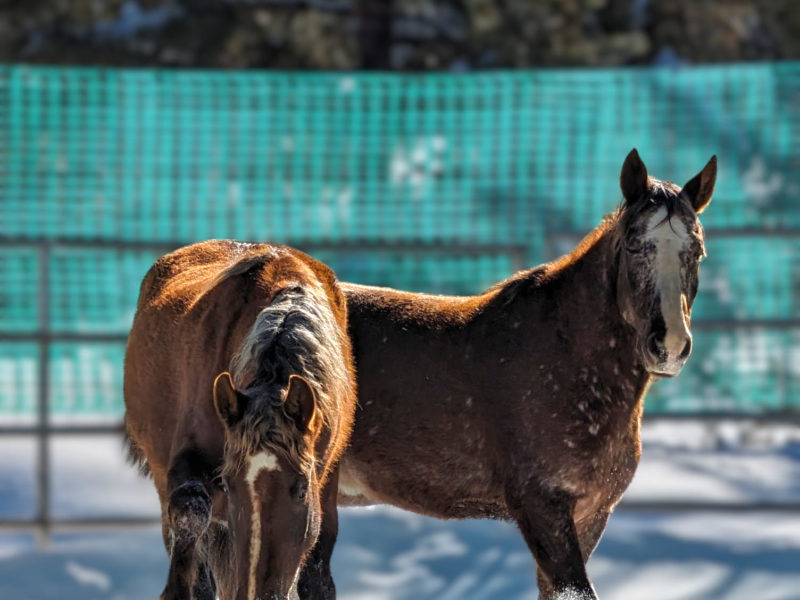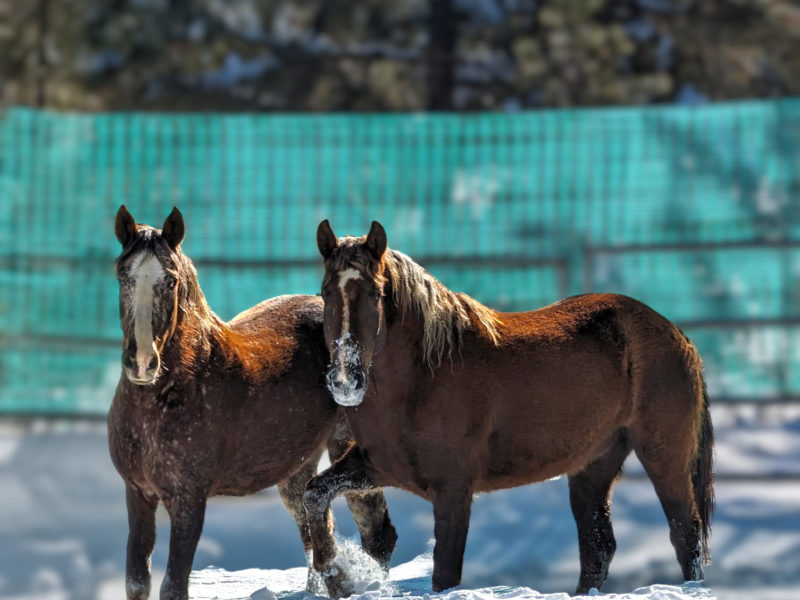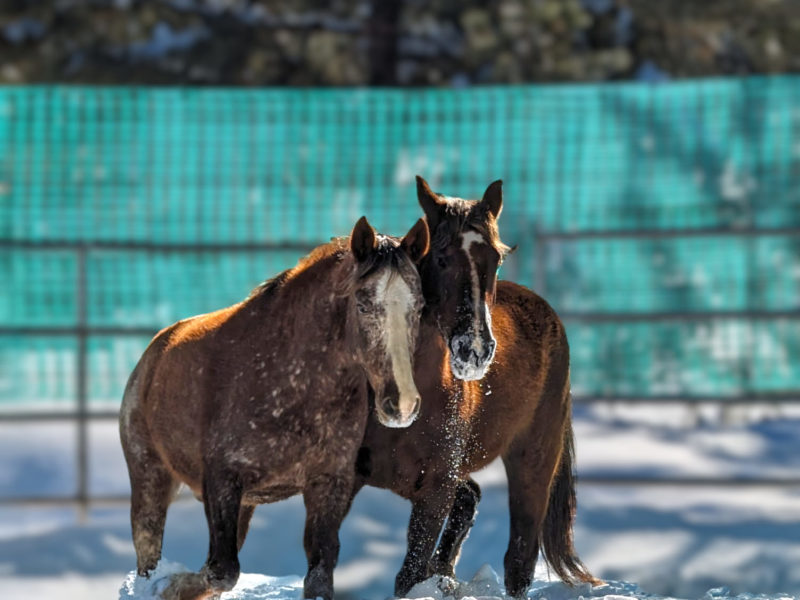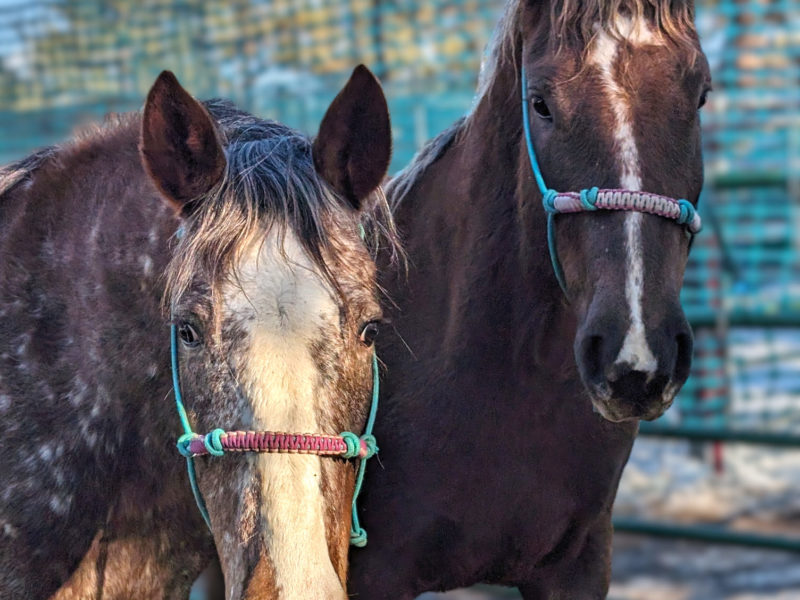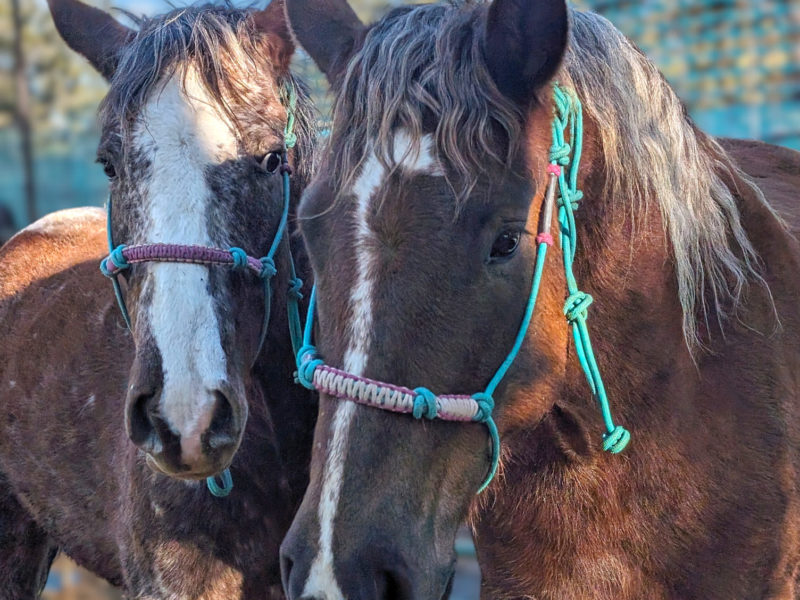This was Lorena’s (2yo Twin Peaks CA Mustang filly) first time being ponied. Lorena, now Wren, has since gone home to her adopter in Michigan. I just got an update yesterday.
Kiddo is doing well, turning into quite the ham, and from the sounds of it landed exactly where she needed to be. I’m happy for Wren and her human. Thank you to all who support Wild Horse Outreach & Advocacy in doing what we do. You are instrumental in making these success stories a reality.
What do I mean by “difficult” side?
When I first introduce ponying, I start with the horse I’m ponying on my right. Later I’ll practice on both sides. To make it easier on them we go clockwise first.
That keeps the newbie to the inside of the circle, meaning they don’t have to hustle to keep up and if they jump around a bit trying to figure things out, they have somewhere to go and space to do it.
Wren settled into that effortlessly, so we checked that box and went the other direction. This is a tiny round pen and being in between my riding horse and the fence makes some of the greenies feel claustrophobic. And it’s harder because they’re on the big circle and have to walk faster.
Everyone first learns to step forward at a tap behind the shoulder, something Mustang Matt taught me when he was here a couple of years ago. It’s made a huge difference. That really helps when encouraging a horse forward while ponying.
Wren took to it really nicely and was wonderful about taking feedback. Timing and feel are important so they can understand what to do. Ideally I want the ponied horse’s nose at my knee, with about a foot in each direction still being in the tolerance zone.
FYI, original audio in this video, so if you want a bit of explanation to go with it, you can listen to me ramble ![]() My camera shy self loved none of that BUT I said I was going to grow and do hard things, so here we go.
My camera shy self loved none of that BUT I said I was going to grow and do hard things, so here we go.
I’m carrying a 5ft buggy whip with a short lash. I like the feel and the weight of it, I can reach where I need to and there’s no long lash to get stepped on and confuse horses when it’s flopping around. I have a 6ft one too, I like them both.
Do you need to do this bareback in a halter? No. You do you. Lacy is used to it and it keeps my backside warm (see all that snow?). I also didn’t want to be tempted to dally. I spent most of last year nursing the princess back to health and I don’t want other horses tugging on her.
Questions? Your own experiences with ponying? Let’s hear them!
Want to learn how to do this? We do have learning opportunities available, both on and off site, so get in touch via email or PM.
Thank you Kelsey for filming.
I’m staying warm out there all day because Outback Trading Company LTD. makes great gear for all seasons.
#wildhorseswillingpartners#BLMmustang#wildtowilling#adoptamustang#makingmountainmustangmemories

